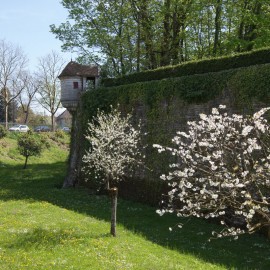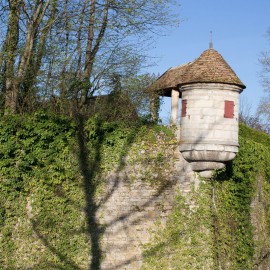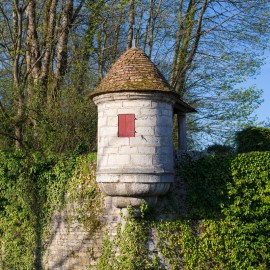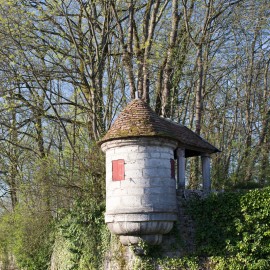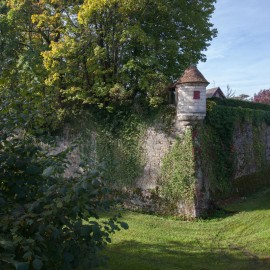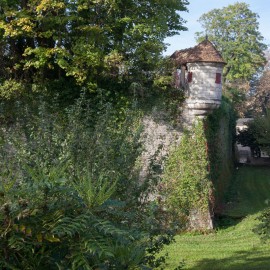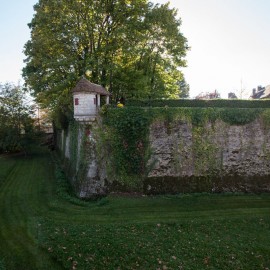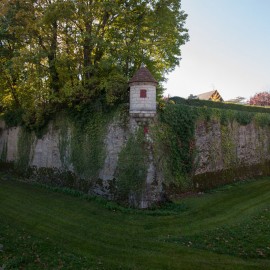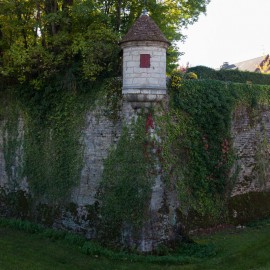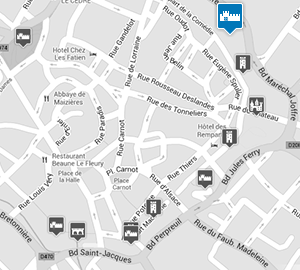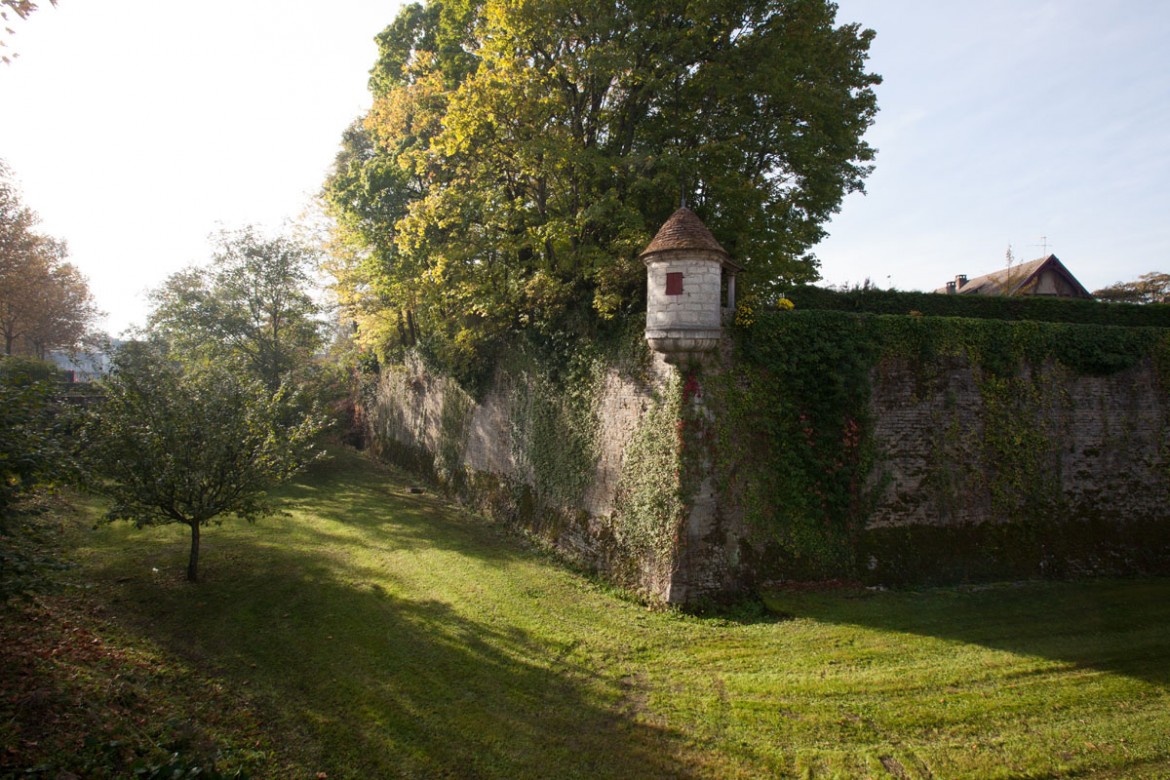
Bastion Notre Dame
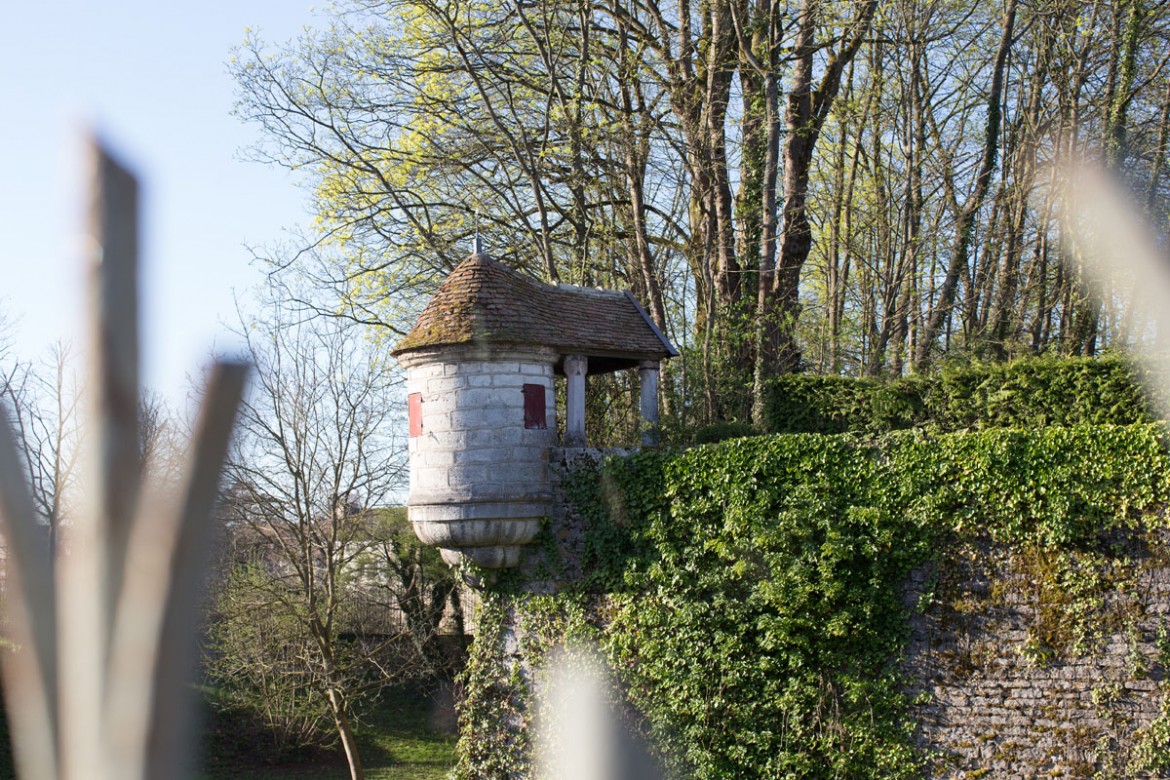
A watch-turret dominates the moat
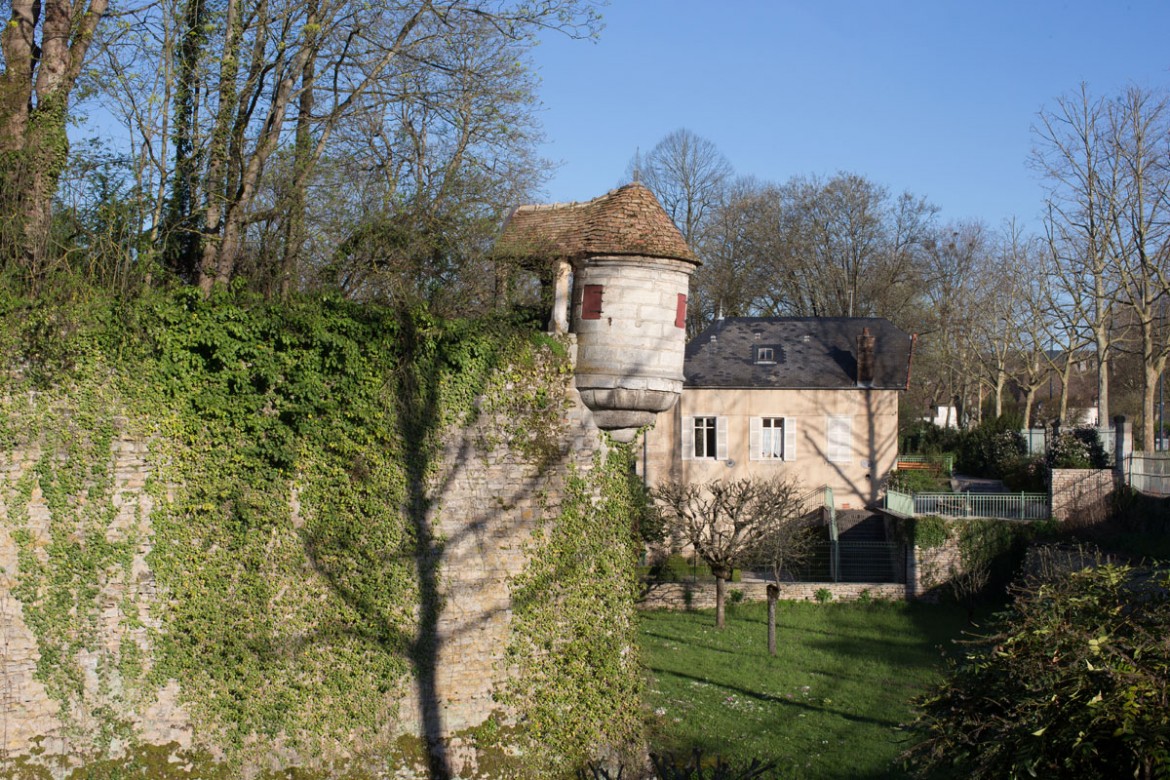
This bastion was built during the Thirty Years' War (1637)
Built during the Thirty Years' War (1637), it encloses the small 14th-century Tour Notre Dame.
In its angle, on the boulevard side, a watch-turret, covered by a domed roof of stone hidden under a tiled roof dating from the 19th century, dominates the moat.
On the city side the bastion overlooks Place Morimont, where the gallows stood during the Ancien Régime, so that the cries of the victims and the crowd could be heard.
The first execution recorded in the archives dates back to 1394. Apparently, from the end of the 18th century executions took place in Dijon, the seat of the Parliament where the trials took place.
A few steps from here, on the rampart, you can see the rear exit of the former Comédie theatre with its pediment decorated with masks and violins; it was opened by Jean Delautel in 1766 and could accommodate 540 people.
This site is private, so during the guided tours we can only admire the watch-turret.
The Jacobin monastery, built at the time of the Hospices (1477): admire the roof of the chapel, with a nave resembling that of the Hall of the Poor in the Hôtel Dieu (vaulted roof shaped like an upturned boat hull).
Place Morimont:
On 24 June 1367, Philip the Bold confirmed all the justice rights granted to the town of Beaune since the charter of franchise in 1203. As a result, the municipality had an executioner and a place where capital sentences and ordeals ordered by the courts were carried out. More than 30 executions were carried out between the 16th and 18th centuries. At the end of the 18th century the executions were transferred to Dijon.
Rue Spuller with its former Comédie theatre (pediment and fine entrance decorated with masks, violins and theatre accessories) and its half-timbered houses.
The map
To visit
- Château de Beaune
- Tour Renard
- Le Bastion Saint Anne
- Tour des Poudres
- Grosse Tour
- Tour des Billes
- The Lavoir
- Tour des Cordeliers
- Bastion Bretonnière or Condé
- Tour des Dames
- Bastion Saint Martin
- Tour des Filles or de l’Oratoire
- La Porte Saint Nicolas
- The Théâtre – Bastion Saint-Nicolas
- Théâtre de Verdure
- Bastion Notre Dame
- Tour Blondeau

